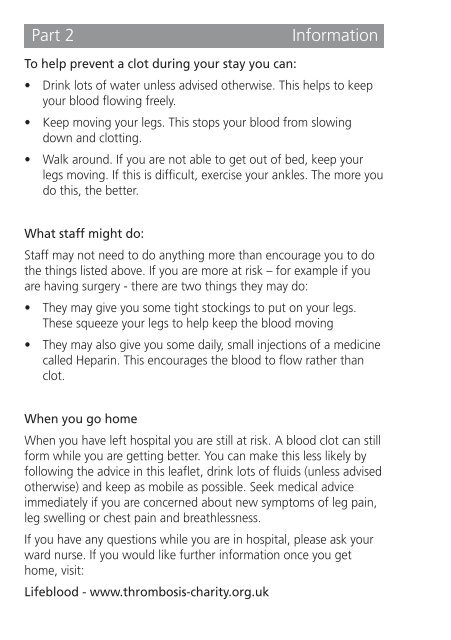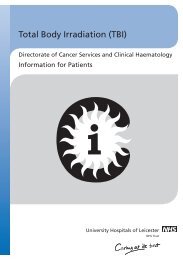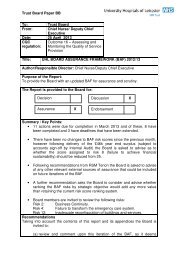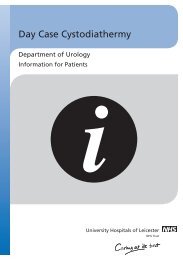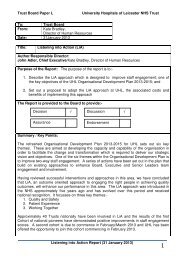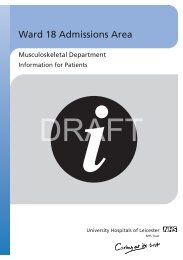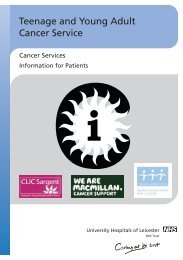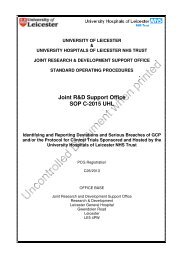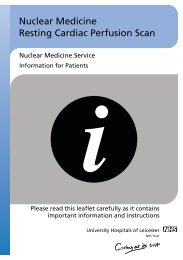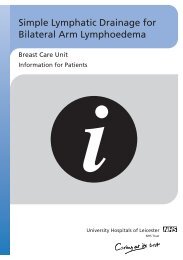Glenfield Hospital Bedside Information for Patients - Library
Glenfield Hospital Bedside Information for Patients - Library
Glenfield Hospital Bedside Information for Patients - Library
You also want an ePaper? Increase the reach of your titles
YUMPU automatically turns print PDFs into web optimized ePapers that Google loves.
Part 2<strong>In<strong>for</strong>mation</strong>To help prevent a clot during your stay you can:• Drink lots of water unless advised otherwise. This helps to keepyour blood flowing freely.• Keep moving your legs. This stops your blood from slowingdown and clotting.• Walk around. If you are not able to get out of bed, keep yourlegs moving. If this is difficult, exercise your ankles. The more youdo this, the better.What staff might do:Staff may not need to do anything more than encourage you to dothe things listed above. If you are more at risk – <strong>for</strong> example if youare having surgery - there are two things they may do:• They may give you some tight stockings to put on your legs.These squeeze your legs to help keep the blood moving• They may also give you some daily, small injections of a medicinecalled Heparin. This encourages the blood to flow rather thanclot.When you go homeWhen you have left hospital you are still at risk. A blood clot can still<strong>for</strong>m while you are getting better. You can make this less likely byfollowing the advice in this leaflet, drink lots of fluids (unless advisedotherwise) and keep as mobile as possible. Seek medical adviceimmediately if you are concerned about new symptoms of leg pain,leg swelling or chest pain and breathlessness.If you have any questions while you are in hospital, please ask yourward nurse. If you would like further in<strong>for</strong>mation once you gethome, visit:Lifeblood - www.thrombosis-charity.org.uk


